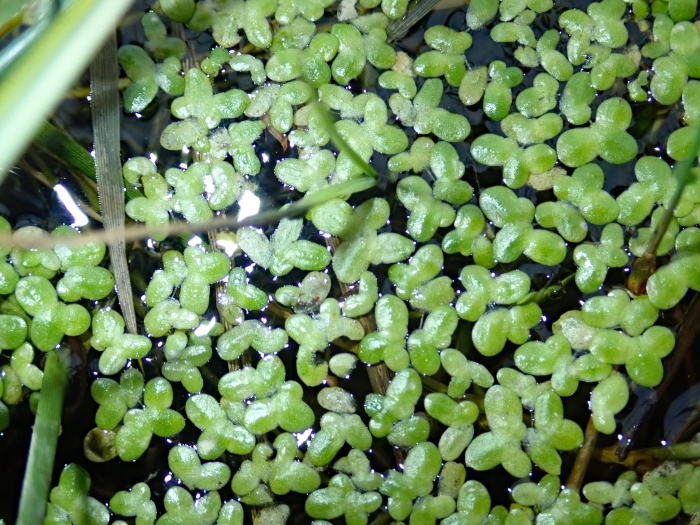Lesser Duckweed
(Lemna aequinoctialis)
Lesser Duckweed (Lemna aequinoctialis)
/
/

Peter de Lange
Public Domain
Image By:
Peter de Lange
Recorded By:
Copyright:
Public Domain
Copyright Notice:
Photo by: Peter de Lange | License Type: Public Domain | License URL: http://creativecommons.org/publicdomain/zero/1.0/ | Rights Holder: Peter de Lange | Publisher: iNaturalist | Date Created: 2019-05-05T15:30:39-07:00 |



























Estimated Native Range
Summary
Lemna aequinoctialis, commonly known as Lesser Duckweed, is a deciduous perennial herb that thrives in still or slow-moving freshwater habitats such as ponds, marshes, and quiet streams in tropical and subtropical regions. It is native to a wide range including Tropical Africa, South America, and South and Southeast Asia. Lesser Duckweed is characterized by its small, free-floating fronds that are typically 3-nerved and green, measuring up to 6 mm in length. Although it rarely flowers, when it does, the flowers are inconspicuous with a single ovule and a small utricular scale that is open on one side. The seeds are distinctive with 8–26 ribs.
This plant is valued for its rapid growth and ability to cover water surfaces, which can help reduce algae growth by limiting light penetration. It is used in water gardens and as a biological filter in aquaculture and wastewater treatment systems. Lesser Duckweed prefers full sun but can tolerate partial shade. It requires an aquatic environment and can grow in water with varying nutrient levels, although it thrives in nutrient-rich conditions. While it is low maintenance, it can become invasive in some settings, outcompeting native aquatic plants.CC BY-SA 4.0
This plant is valued for its rapid growth and ability to cover water surfaces, which can help reduce algae growth by limiting light penetration. It is used in water gardens and as a biological filter in aquaculture and wastewater treatment systems. Lesser Duckweed prefers full sun but can tolerate partial shade. It requires an aquatic environment and can grow in water with varying nutrient levels, although it thrives in nutrient-rich conditions. While it is low maintenance, it can become invasive in some settings, outcompeting native aquatic plants.CC BY-SA 4.0
Plant Description
- Plant Type: Herb
- Height: 0-0.1 feet
- Width: 1.5-3 feet
- Growth Rate: Rapid
- Flower Color: N/A
- Flowering Season: Spring, Summer, Fall
- Leaf Retention: Deciduous
Growth Requirements
- Sun: Full Sun
- Water: Aquatic
- Drainage: Standing
Common Uses
Bird Garden, Low Maintenance
Natural Habitat
Still or slow-moving freshwater habitats such as ponds, marshes, and quiet streams in tropical and subtropical regions
Other Names
Common Names: 青萍
Scientific Names: , Lemna aequinoctialis, Lemna paucicostata, Lemna aoukikusa, Lemna trinervis, Lemna aoukikusa subsp. hokurikuensis, Lemna aequinoctiales, Lemna angolensis, Lemna perpusilla var. trinervis, Lemna angolesis
GBIF Accepted Name: Lemna aequinoctialis Welw.